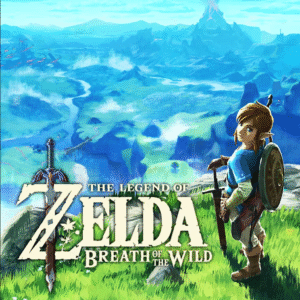The Game Awards: Why Expanding the GOTY Category to 10 Nominees is a Critical Necessity for Industry Recognition
Popular Now
 The Legend of Zelda
The Legend of Zelda
 Rust
Rust
 Valorant
Valorant
 Brawl Stars
Brawl Stars
 Warframe
Warframe
 Grand Theft Auto V
Grand Theft Auto V
 Auto X Drift Racing 3
Auto X Drift Racing 3
 Poppy Playtime
Poppy Playtime
 Genshin Impact
Genshin Impact
 Geometry Dash
Geometry Dash  The Game of the Year (GOTY) category at The Game Awards, while the industry’s most high-profile accolade, has long been constrained by its traditional limit of six nominees. In an era where the quality and sheer volume of high-caliber releases—from sprawling AAA open-world games to deeply innovative independent masterpieces—has exploded, this constraint no longer accurately reflects the richness of the modern gaming landscape. The question of whether to expand the GOTY category to ten nominees is not merely procedural; it is a critical debate about full industry representation and the financial value of a nomination.
The Game of the Year (GOTY) category at The Game Awards, while the industry’s most high-profile accolade, has long been constrained by its traditional limit of six nominees. In an era where the quality and sheer volume of high-caliber releases—from sprawling AAA open-world games to deeply innovative independent masterpieces—has exploded, this constraint no longer accurately reflects the richness of the modern gaming landscape. The question of whether to expand the GOTY category to ten nominees is not merely procedural; it is a critical debate about full industry representation and the financial value of a nomination.
For studios, a GOTY nomination translates directly into a massive boost in sales, media visibility, and potential investment, often referred to in finance as a high-value marketing asset. Increasing the nominee count would allow the awards to recognize more of the year’s truly exceptional titles, particularly those brilliant but perhaps lower-budget games that consistently get edged out by the financial might of major publishing houses. This move would directly align with the awards’ stated mission to “celebrate and advance gaming’s position as the most immersive, challenging, and inspiring form of entertainment.”
 The Argument for Expansion: Maximizing Industry Visibility
The Argument for Expansion: Maximizing Industry Visibility
The primary justification for expanding the nominee list rests on acknowledging the current depth of quality across all segments of the video game development market. The current limit of six forces the TGA jury to make agonizing exclusions that leave genuinely groundbreaking titles out of the spotlight. This is especially true for the following categories:
- Indie Game Representation: While titles like Balatro have recently broken through, the Best Independent Game category is often seen as a consolation prize. A list of ten GOTY nominees would almost certainly guarantee two or even three indie or mid-budget titles a spot, offering them the ultimate global platform. The financial multiplier effect for a small studio from a GOTY nomination is arguably larger than for an established AAA studio.
- Genre Diversity: A six-slot limit naturally favors the most commercially dominant genres, typically Action/Adventure and RPGs. Expanding to ten would provide essential space for high-quality games from less represented genres, such as immersive simulation (ImSim), Strategy, or innovative Puzzle games, which often receive high critical scores but low marketing spend.
- Recognizing Expansions: As the industry increasingly shifts toward long-term support and massive expansions—such as Elden Ring: Shadow of the Erdtree (which was a clear GOTY contender in 2024)—the six-slot list struggles to accommodate both base games and significant, transformative DLCs. A larger list would prevent an arbitrary exclusion of a high-quality expansion that might represent the single best gaming experience of the year.
Strong Industry Insight: The more titles nominated, the more diverse the audience that tunes in to The Game Awards, increasing the value for advertising partners and raising the profile of the entire event. It is a smart business move for the show itself.
The Counterpoint: Maintaining the Prestige of the Award
Critics of expansion often point to the potential dilution of the award’s prestige. The core argument is simple:
- Maintaining Exclusivity: A short list of six titles is meant to represent the absolute, undisputed best of the best, ensuring that the award remains an exclusive club. Expanding it might make the nomination feel less significant, a step toward becoming a mere “Best of the Year” list rather than a definitive “Game of the Year” shortlist.
- Voter Fatigue: The TGA jury, composed of over a hundred media outlets, is already tasked with evaluating a massive slate of games. Expanding the top category might spread the jury’s focus too thin or complicate the voting process, potentially leading to less rigorous consideration of each nominated title.
However, given the current state of high-quality video games, this concern is largely unfounded. A selection of ten titles in 2025 would be an accurate reflection of true excellence, not an act of lowering the bar. The goal is to celebrate ten 10/10 games, not six 10/10 games and four 9/10 games. The caliber of releases suggests that ten truly exceptional nominees are available every year.
 Historical Precedent and The Path Forward
Historical Precedent and The Path Forward
Award shows in other media, such as the Oscars, have previously adjusted their nomination counts to better reflect the quality of output, often in response to public and industry pressure. The shift in gaming over the past decade has been more profound than in almost any other entertainment medium, accelerating the pace of innovation and the volume of releases. The current six-nominee structure is increasingly viewed as an artifact of a bygone era when fewer high-budget titles dominated the calendar.
A move to ten nominees for GOTY would serve as a powerful statement, confirming The Game Awards as a forward-thinking institution committed to fully capturing the vibrant and diverse state of the interactive entertainment industry. It is an essential step to ensure that deserving titles, regardless of their marketing budget or studio size, receive the high-level recognition they have earned.
Conclusion: The critical consensus is clear: expanding the GOTY list is a necessity. It is the most effective way to address the immense quality disparity and represent the full scope of successful video game projects being released annually, ensuring that no truly deserving title is overlooked.











 The Argument for Expansion: Maximizing Industry Visibility
The Argument for Expansion: Maximizing Industry Visibility Historical Precedent and The Path Forward
Historical Precedent and The Path Forward